If you’re a runner, you may have had running shoe shops recommending you get a gait analysis done. But isn’t this simply their way of tricking you into buying fancy, expensive shoes you don’t need? Is it worth your time to have a gait analysis done?
Getting a gait analysis can do so much more than just help you decide what shoes to buy (although that is helpful, too).
Read on to learn more about how a professional, clinical gait analysis can help you live your best pain-free life.
What Is Gait Analysis?
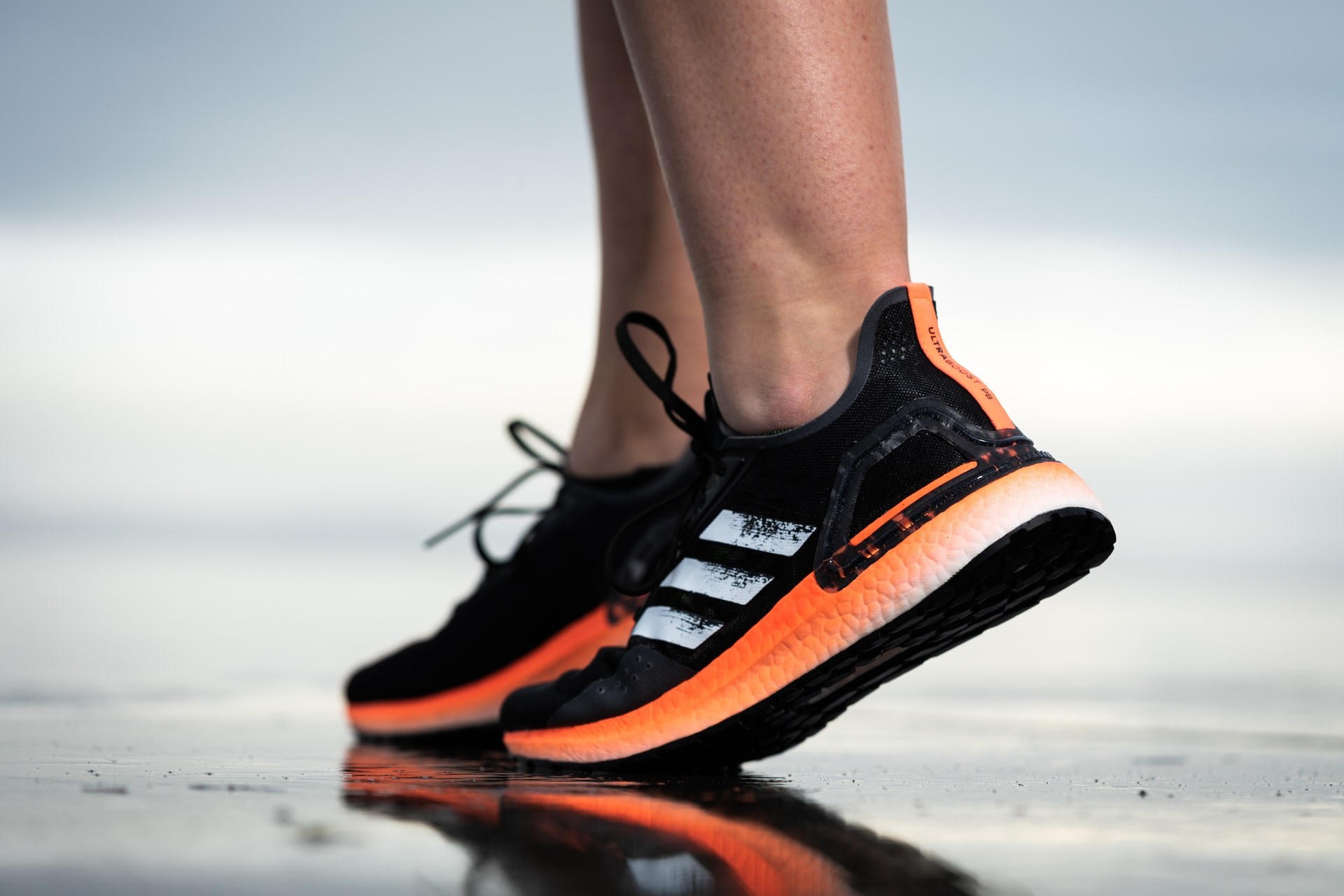
Gait analysis is the process of looking at how your body movements, or biomechanics work, as you walk or run. This analysis may begin and end with your feet, but it incorporates your entire body. Clinicians will look at the sequence of events, or time period, as you move from one foot to the other. This is called the 'gait cycle'.
The clinician will take note of your ‘gait parameters, including your step length, stride length, stride width and foot angle. There is no such thing as a ‘normal gait’, which is why a thorough analysis is so important to determine how you move your body.
After all, every step you take involves muscle activity as you move your whole body. Your feet are only a part of that expression and movement. Each foot strike or heel strike makes an impact on your body.
Gait analysis can be a powerful way to determine if you have any bad habits that are causing extra strain on your body. It can also be useful for determining what sort of shoes you need to get to correct any poor foot posture. Gait analysis can completely transform your walking and running style, making every day less painful.
How Does It Work?
There are two basic ways to conduct gait analysis, and many analysts use both.
Old Fashioned Gait Analysis
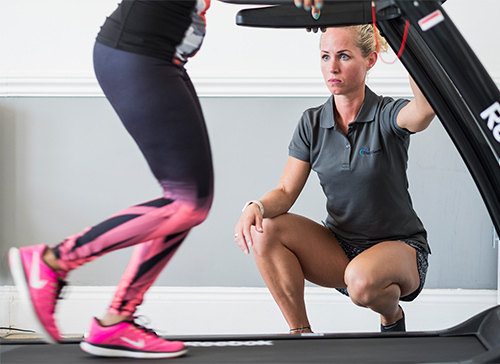
The traditional first step will be a basic visual examination; the analyst may have you run on a treadmill for a minute or so and will watch how your feet land as you run. This method involves slowing down the recorded video of you running to see how you pronate each foot at the stance phase of the gait cycle.
In addition to your lower limb movement, they will pay attention to the rest of your posture, including where your arms and head are.
More thorough examiners will also make brief video recordings of you running and will play that recording back for you frame-for-frame. This video gait analysis will help them spot patterns in your gait which may be causing problems.
The reality is this old-fashioned method of gait analysis is not detailed enough to provide an effective solution for most people, and especially runners.
You might come across companies offering you an online gait analysis. This involves sending them a video of you running. This is an inadequate way of understanding your gait. It leaves out important gait parameter details, which means you’re unlikely to get a solution which works for you.
Everyone pronates (where the sole of the foot rolls inwards) or supinates (where the sole rolls outwards). Everyone’s gait stems from their individual foot biomechanics, which places stress on your foot in different ways.
These factors are known as the ‘windlass mechanism’ which explain the way your plantar fascia, the thick ligament in your foot which connects the front of your foot to your heel, supports your weight when you run or walk.
Modern Gait Analysis Methods
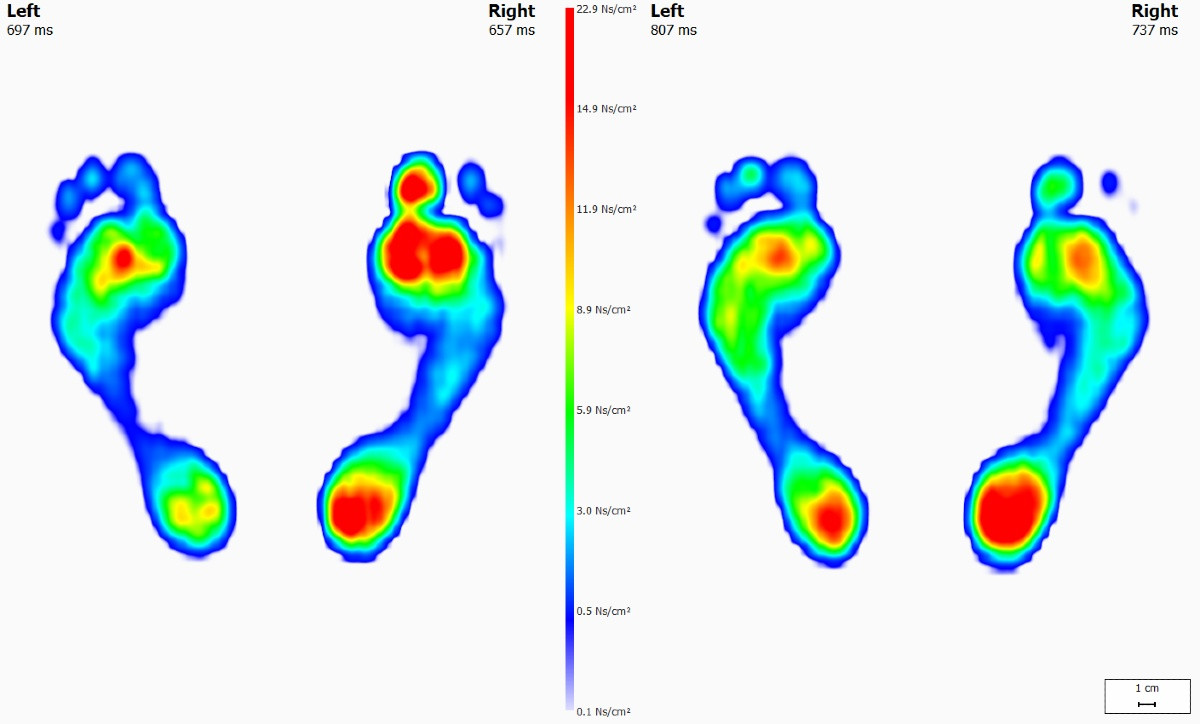
The conventional methods above are inadequate when it comes to helping clinicians provide a bespoke solution to your needs.
Modern examiners use sophisticated scanning technology to check for any dysfunction, asymmetry or gait abnormalities. The scanners and tracks they use measure your loading patterns and movement efficiency. This approach provides a more accurate and detailed analysis, which means they can help you more effectively.
From there, they can make recommendations for the suitable foot orthotics to use in your shoes. Bespoke foot orthotics to support your feet in the right areas are more effective than trying to figure out the right running shoes you need.
What Do They Look At?
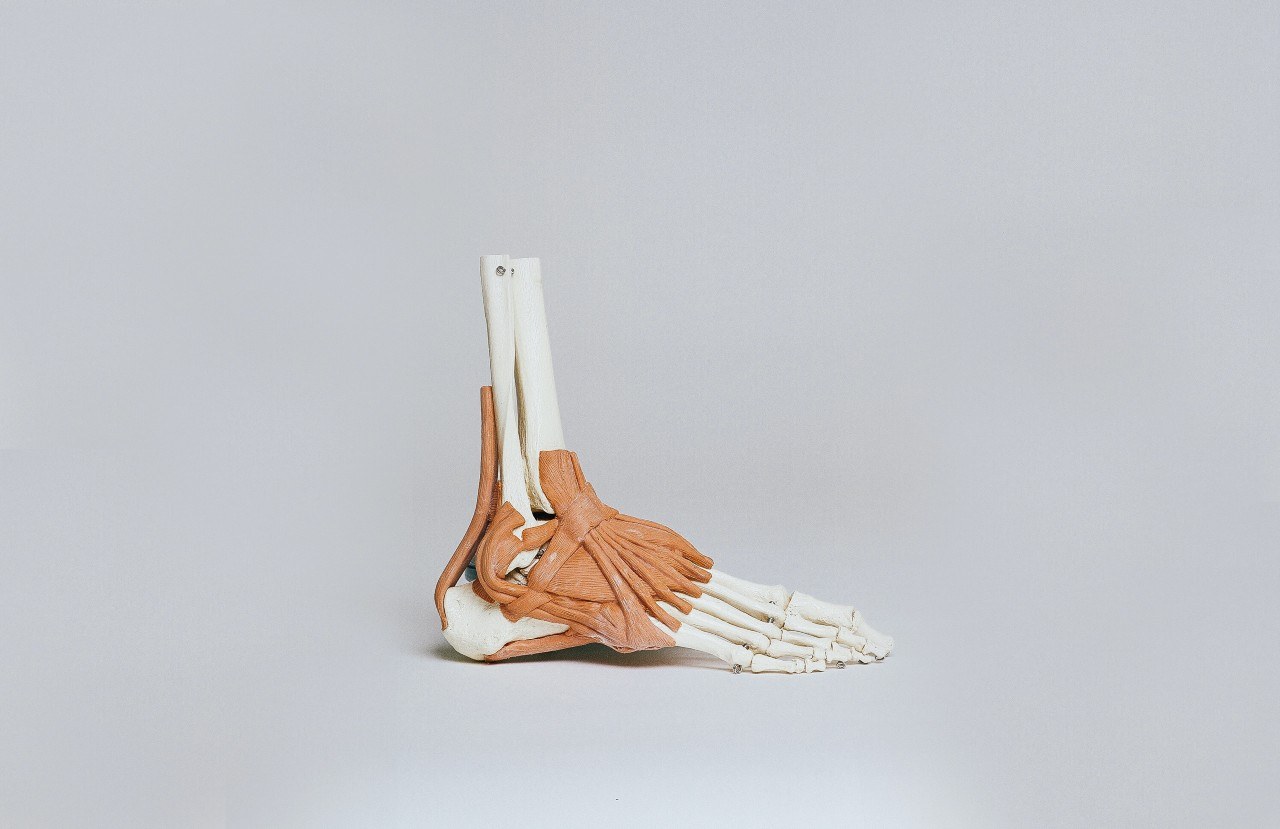
There are a few things a gait analyst will look at when determining what sort of shoes you need. They will likely start by studying how your feet move during the five stages of your gait.
These include your stance (when your foot hits the ground), loading (when your forefoot touches down), mid-stance (when your heel starts to lift), toe-off (when your foot leaves the ground), and swing (when your foot moves forward before striking the ground again).
A gait analyst will also pay attention to where on your feet you carry your weight. Some people carry their weight further in towards the arches of their feet, while some tend to roll out onto the outside of their feet.
The analyst will look for inefficiencies, foot rolls and other biomechanical aspects of your movement. Their analysis will show causes of breakdowns in your foot mechanism.
The windlass or reverse mechanism allows movement through the three rockers in your feet, and, especially, the movement in your big toes. You can’t spot much of this movement without using a detailed scan of your feet.
All this provides information about your gait pattern and where you need greater support, cushioning and stability.
Overpronation
When you get a gait analysis done, they will tell you whether you tend towards overpronation, underpronation, or a neutral gait. This is related to what we just talked about with how you carry your weight. Overpronation is by far the most common tendency, with about 70 per cent of runners showing this gait.
Overpronation happens when you carry your weight further in on your foot towards your ankles and arches. As your foot lands in your stance, you roll too far in, placing weight on the inside of your foot and putting extra strain on your arches. If you overpronate, you might notice the insides of your shoes wear out faster than the outsides.
Underpronation
As you might expect, underpronation is the exact opposite of overpronation, though it is a bit rarer. This tendency, sometimes called supination, happens when you carry your weight on the outside edges of your feet. As your foot lands, you roll out towards your ankles.
Underpronation can place a lot of extra strain on your lower leg due to the way it transmits the shock from your foot hitting the ground. Your arch is meant to absorb some of that shock, but when you underpronate, the outside edge of your foot absorbs it all instead. This transmits that force into your lower leg, causing problems like muscle strain and shin splints.
Neutral Pronation
Neutral pronation is the rarest and healthiest type of running gait. During this gait, you land first on the outside edge of your foot, giving you plenty of stable support. But as that shock wave lands, you roll your foot inward in a controlled manner so that your arch absorbs the force and protects your legs.
When you toe-off in a neutral gait, your weight will be distributed evenly across the front of your foot. This prevents extra strain on your toes, ankles, and legs. Neutral pronation is the ideal gait style and what running shoes will be adjusting your gait towards.
How Your Arches Contribute
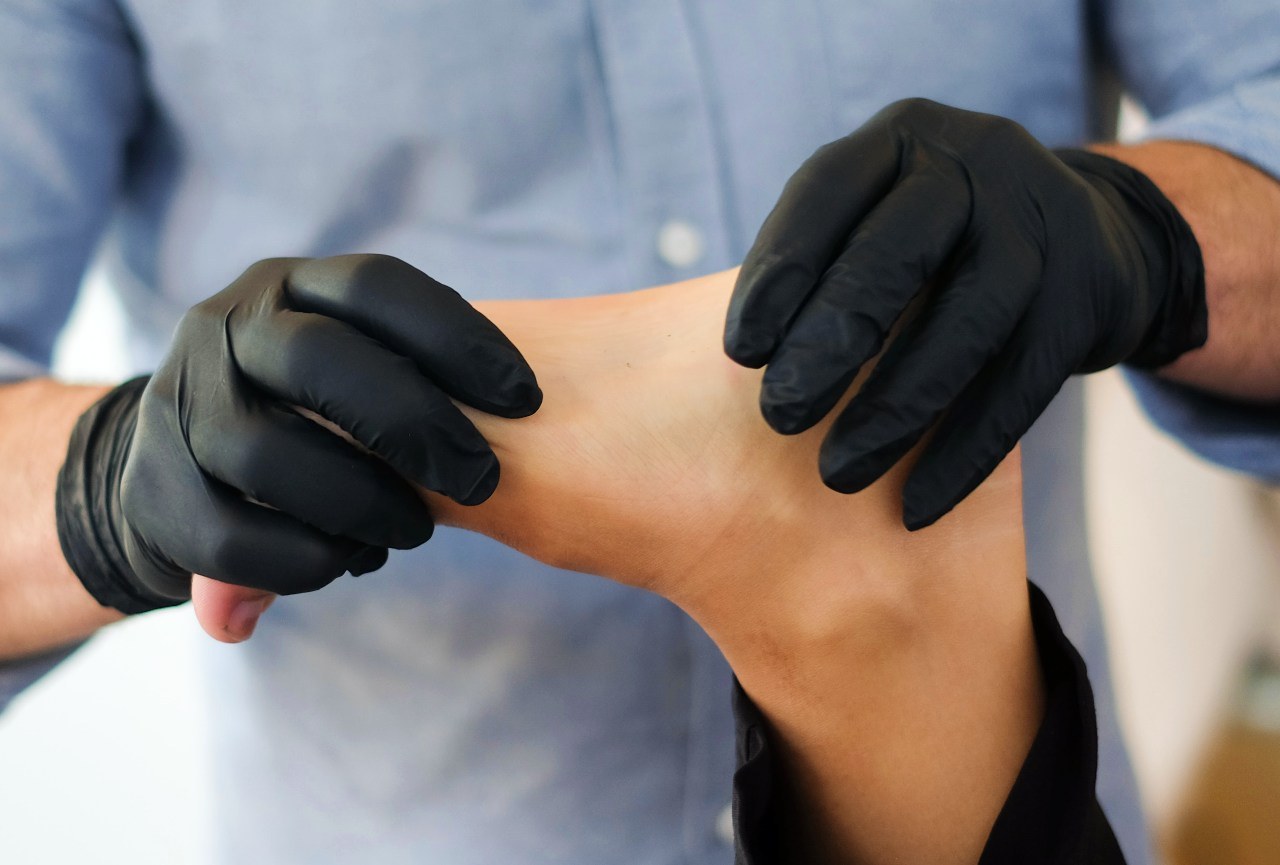
We’ve mentioned the arches of your feet absorbing the shock of your feet hitting the ground, but did you know that they can contribute to your pronation? The height of your arches can push your foot in or out as it hits the ground. It’s a matter of balance and where you tend to carry your weight.
Runners with low arches or flat feet tend towards overpronation, since the arch doesn’t support their foot as much. If you have high arches, you may tend towards underpronation. Neutral pronation usually occurs in people whose arches are somewhere in the middle.
How Your Gait Impacts Your Body
We’ve mentioned how your gait impacts your lower legs and ankles, but it can have a serious impact on the rest of your body, too. For one thing, the angle of your ankle and lower legs tugs on your knees. Runners with severe under- or overpronation may find their knees aching after long runs.
Your gait can also impact how your weight lands on your hips with each stride. As your hips shift to accommodate this weight, it can pull on your low back, causing strain or injury. You may begin to practice poor posture to favour your aching back, which can put additional strain on your shoulders and neck.
How Foot Orthotics Help
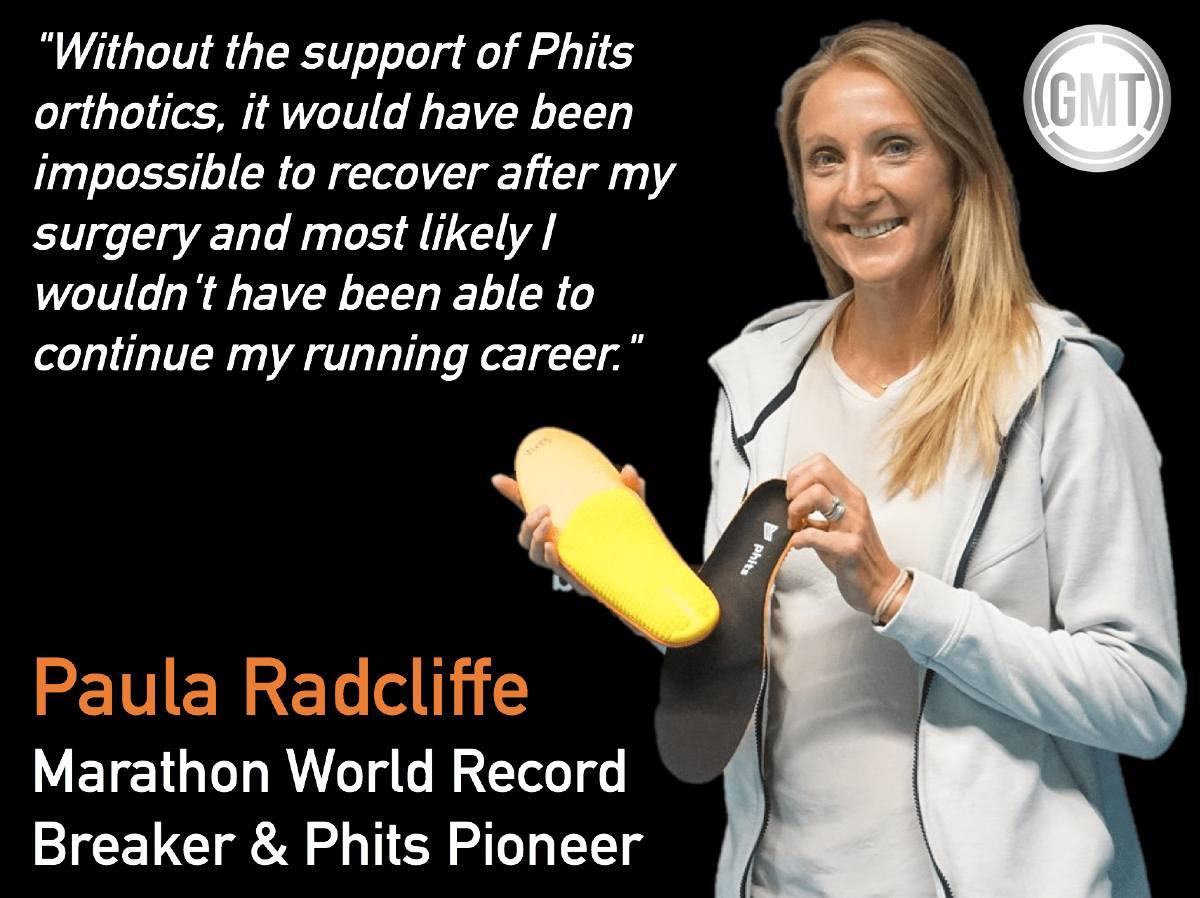
It may sound odd to suggest that getting the right foot orthotics could impact your entire body’s health. You might have expected getting the right running shoes would be more important.
But when you correct your gait, you literally fix all those other problems from the ground up. Your knees and hips stay healthy, your back stays in alignment, and your neck doesn’t experience excess tension.
And, most of the effective factor in correcting your gait is what you put in your shoes, not the shoes themselves.
Your gait analyst may recommend foot orthotics. These are special inserts for your shoes to provide bespoke support using the data from their analysis.
If you tend towards overpronation, a shoe with more arch support can push your feet back into proper alignment with every stride. If you underpronate, a shoe with lower arch support can give your foot space to relax into a healthier gait. And if you have neutral pronation, a good neutral shoe can keep you from developing either of these other problems.
Address Pelvic Instability
One of the primary issues a gait analysis can help correct is pelvic instability. As we mentioned, when your foot hits the ground, that shock wave and weight transfer continue all the way up your leg. If you don’t have a good, solid base under you when your foot lands, it can cause instability in your pelvis.
Pelvic instability can make it hard to build the core muscles you need to support your back for proper running posture. This can put extra strain on your knees, sometimes even causing ACL tears and runner’s knee. By getting the right pair of shoes with high-quality foot orthotics, you can put a solid base under your feet that will keep your hips stabilized with each stride.
Correct Your Head Position
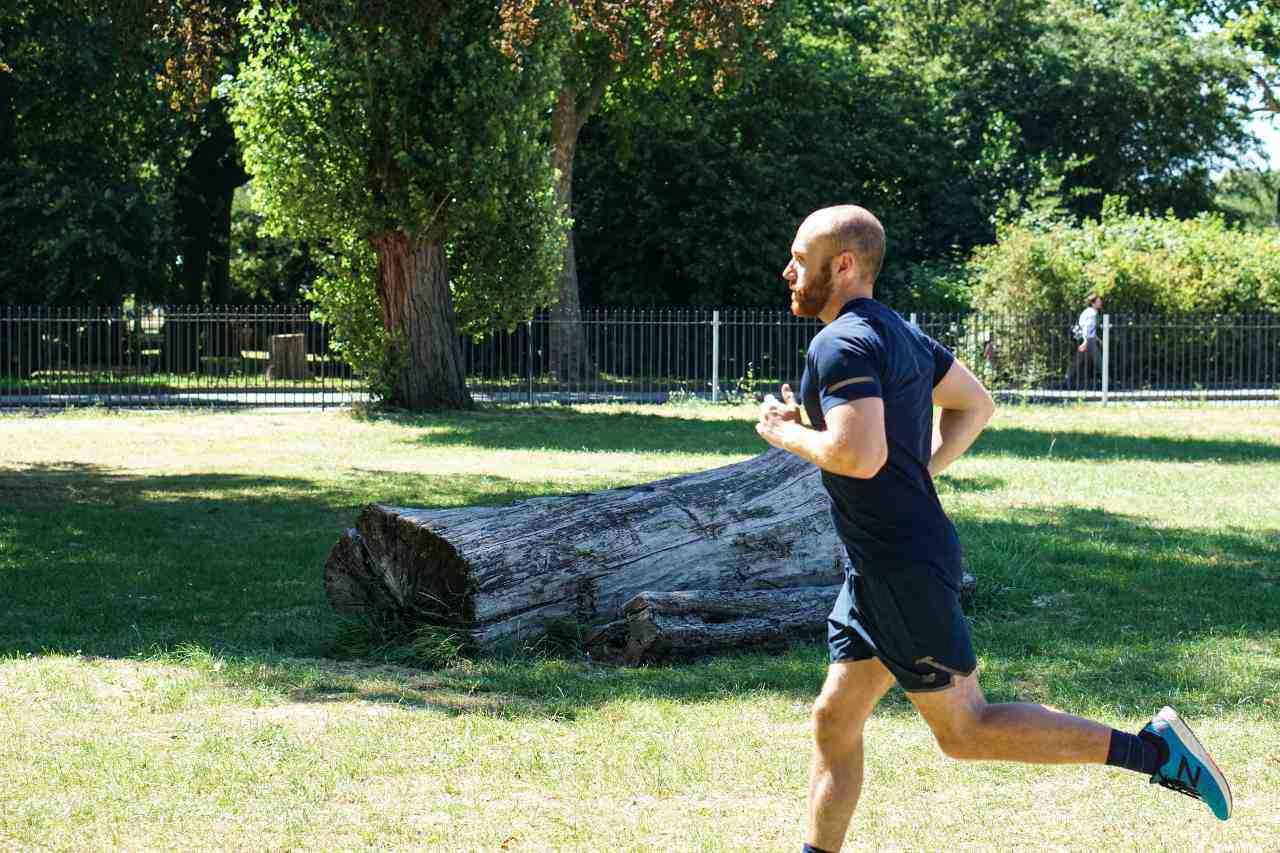
When we run, many of us are focused on our breathing, our stride, and where our foot lands each time it hits the pavement. What we aren’t focused on is what our head is doing. And when you don’t have the right shoes and orthotics, your head may wind up in an odd position that places strain on your neck and shoulders.
A gait analysis can point out any strange head positioning you may have going on. On your next run, you can focus on keeping your head in a relaxed position over the top of your neck. This can make your runs easier, as well as reducing neck pain throughout the rest of your day-to-day life.
Reduce Overstriding
Another common problem among runners, especially those who have never had formal training, is overstriding. This happens when you are trying to cover more ground, and you overreach with your stride. This places your centre of mass in the wrong place, negating any progress you’ve made on the pronation front.
Overstriding can place serious strain on your feet, hips, knees, and back. You lose the support from your core muscles and place yourself at higher risk of injury. Having a gait analysis done can bring these issues to your attention so you can focus on keeping your stride the proper length during your next run.
Fix Your Arm Position
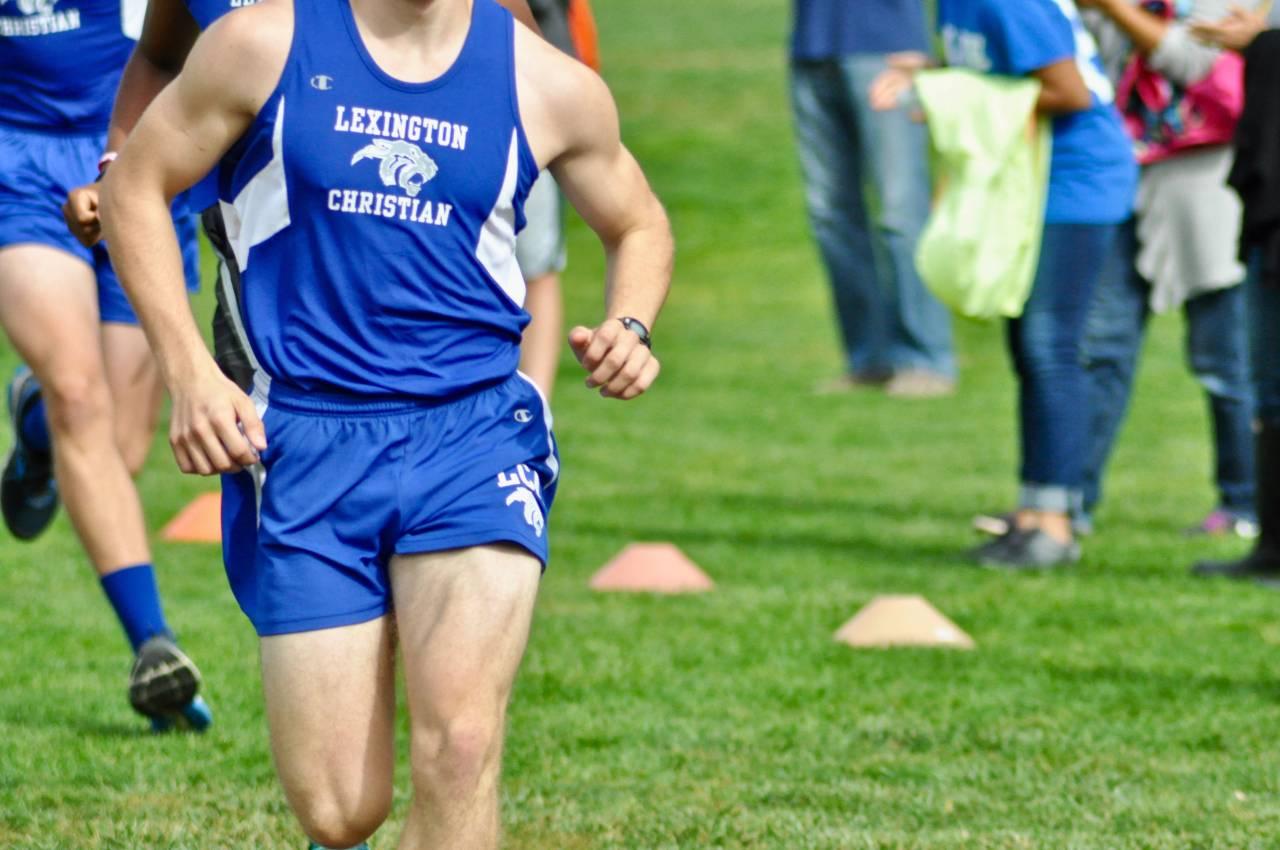
Arm position is another one of those issues many of us tend to overlook when we run. You may wind up with your shoulders up by your ears, your arms swinging too far, or clamped in by your sides. This can put extra strain on your back muscles, not to mention interfering with your gait.
Our arms are meant to move naturally as we run or walk to help with our balance. But there’s a fine line between keeping your arms too stiff and allowing them to swing out of control. A gait analysis can point out any issues with your arm position and let you know how to fix them.
Address an Anterior Pelvic Tilt
If you notice your low back hurts when you finish with a long run, you could have an anterior pelvic tilt. This happens when your hips tilt too far forward and you get an excessive curve in your lower back. An anterior pelvic tilt is usually the result of tightness in the front of your hips, which pulls them forward.
When your hips are tilted too far forward, it forces the rest of your body to compensate as you propel yourself forward. This can cause muscle strain and achiness throughout your body. A gait analysis will pick up on this issue, and your analyst can make recommendations about how to address it.
Discover the Benefits of a Gait Analysis
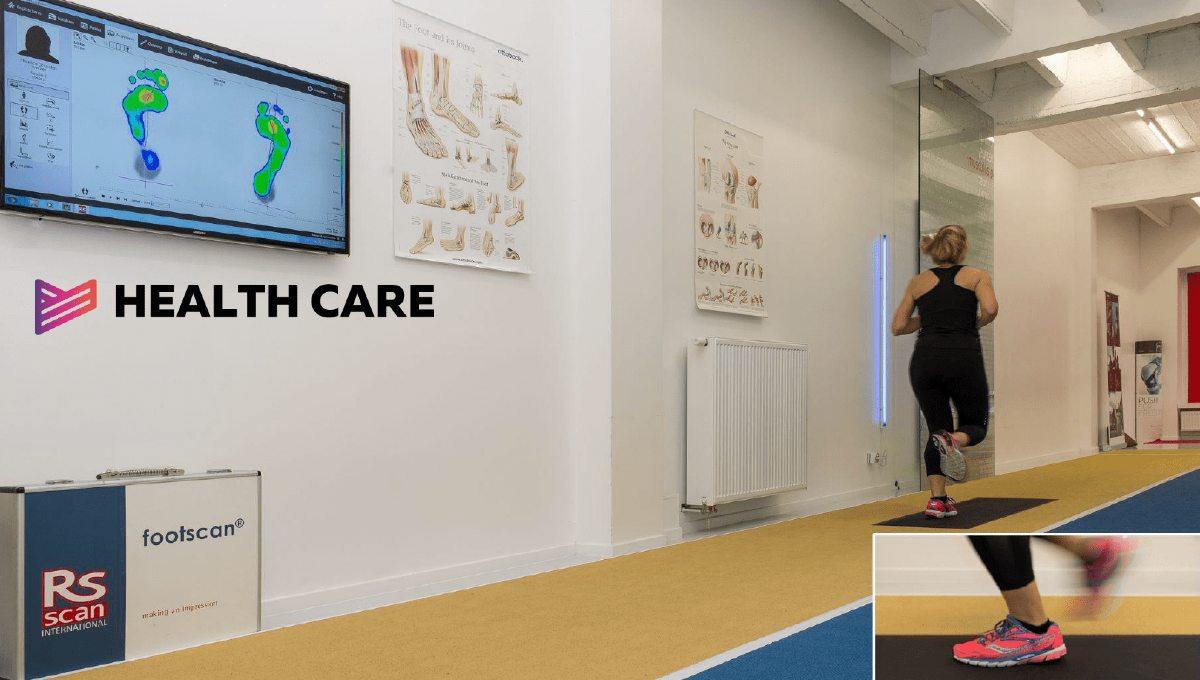
Having a gait analysis done can be an excellent way to reduce your daily pain, whether or not you’re a runner. It will pick up on issues with your stride, unusual head or arm position, and any other issues hiding in your walking patterns.
And if you are a runner, this analysis can help you find the foot orthotics, the right shoes and running routine to keep your body in peak condition and make all your runs easier.
After all, elite athletes pay detailed attention to the fluid operation of their lower limb biomechanics. The strengthening and promotion of a natural elastic recoil in your lower limb is what helps elite athletes to perform at elite levels. And, you should pay just as much attention to your gait analysis, whether you’re an elite athlete or not.
If you’d like to discover more ways to keep your body in its best possible condition, check out the rest of our site at The Medical Healthcare Centres.
We have sixteen centres available nationwide with sixty-five available healthcare services. Get an online consultation today and start living your happiest, healthiest life.

